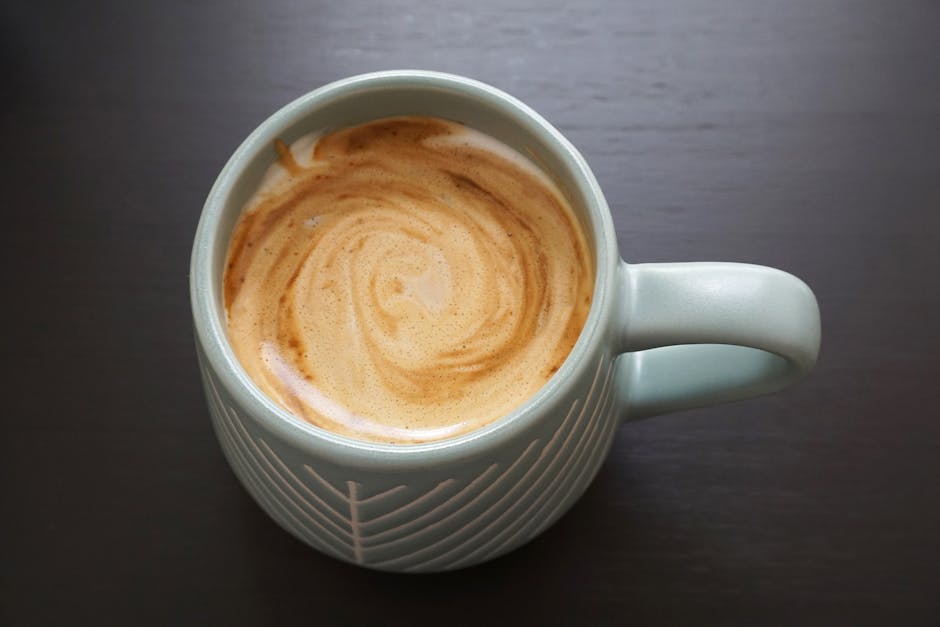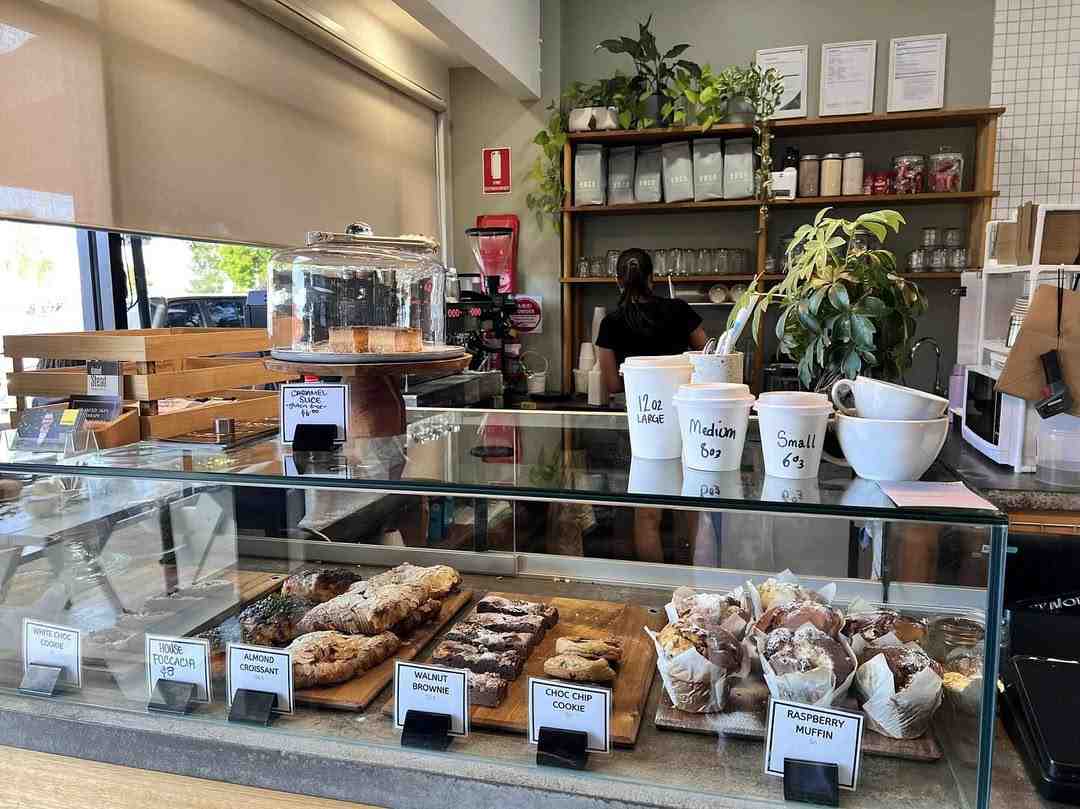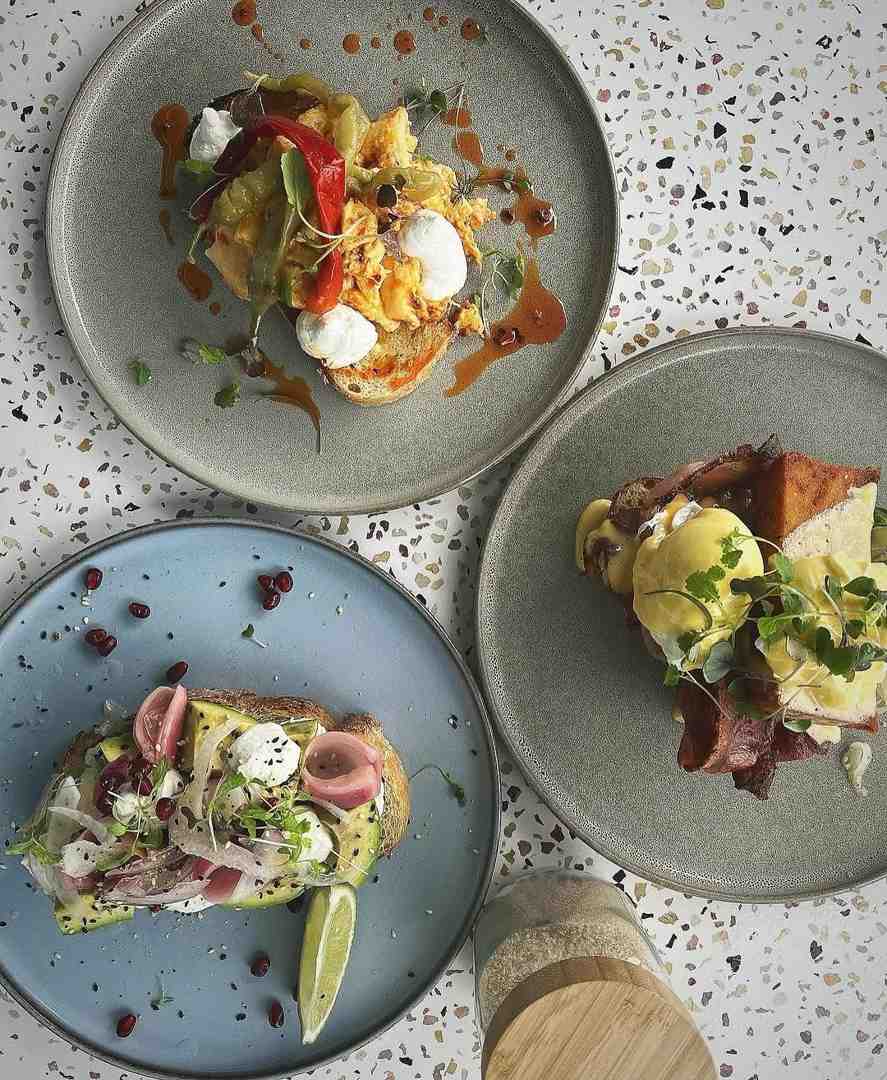Steamed Milk Showdown – Latte vs Cappuccino

Steamed Milk Essentials: The Difference That Makes All the Difference
Latte vs cappuccino is one of the most common coffee questions we hear at Flinders Lane Cafe. If you're wondering about the difference, here's the quick answer:
| Drink | Composition | Size | Texture | Best For |
|---|---|---|---|---|
| Latte | 1 part espresso, 2 parts steamed milk, thin foam layer (5mm) | 220-250ml | Smooth, creamy | Those who prefer milkier, subtler coffee |
| Cappuccino | Equal parts espresso, steamed milk, and foam (1:1:1) | 140-180ml | Distinct layers, thicker foam (1.5-2cm) | Those who enjoy stronger coffee flavor with airy texture |
Ever stood at a coffee counter, staring at the menu and wondering what really separates these two popular espresso drinks? You're not alone. While both latte vs cappuccino start with the same espresso base, the difference lies in their milk-to-foam ratios and textures - creating entirely different drinking experiences.
At its core, the distinction is simple: a cappuccino balances equal parts espresso, steamed milk, and foam, while a latte uses more steamed milk with just a thin layer of foam on top. This creates a stronger, more textured drink in the cappuccino versus the smoother, creamier latte.
The difference isn't just academic - it affects everything from mouthfeel to temperature retention and even how the coffee flavor comes through. A cappuccino's thick foam layer actually insulates the drink, keeping it warmer longer, while a latte's greater milk volume creates a naturally sweeter, more subtle coffee experience.
I'm Janice Kuz, owner of Flinders Lane Cafe in Maroochydore, and after 20+ years in hospitality and countless latte vs cappuccino discussions with curious customers, I've learned that understanding these differences helps people find their perfect coffee match.
Latte vs Cappuccino At a Glance
Curious about the real difference between a latte and a cappuccino? At our Maroochydore café, this is one of the most frequent questions we get. Many locals want to know exactly what sets these two beloved coffee drinks apart.
The most visible difference is size – cappuccinos are typically served in smaller 140-180ml cups, while lattes come in larger 220-250ml vessels. This size difference directly reflects what's inside. A cappuccino follows the harmonious 1:1:1 ratio (equal parts espresso, steamed milk, and foam), creating a more pronounced coffee experience. A latte, meanwhile, follows roughly a 1:2 ratio of espresso to steamed milk, with just a thin microfoam layer on top.
When you order either drink at Flinders Lane, you're getting two completely different coffee experiences. Cappuccinos deliver a bolder coffee flavour balanced by the creamy milk and pillowy foam. Lattes offer a smoother, milkier experience where the espresso notes blend more subtly throughout the drink.
What is a Latte?
A latte (caffè latte) combines one or two shots of espresso with steamed milk and a thin layer of microfoam on top. Fun fact: "latte" simply means "milk" in Italian, which tells you a lot about this milk-forward beverage!
While people have been mixing coffee and milk for centuries, the modern latte as we know it today gained massive popularity during Seattle's coffee boom of the 1980s. What makes a latte special is its incredibly smooth texture and subtle coffee notes. The generous amount of steamed milk creates a naturally sweet flavour as the milk's lactose caramelises slightly during steaming.
At our Maroochydore café, we prepare our lattes with a double shot of our signature espresso blend (unless you request otherwise) and velvety steamed milk, topped with approximately 5mm of microfoam. This thin foam layer is perfect for creating those Instagram-worthy latte art designs while maintaining the drink's signature silky mouthfeel. The result? A beautifully balanced, approachable coffee that's perfect for those who enjoy a milder coffee flavour wrapped in creamy goodness.
What is a Cappuccino?
The cappuccino has a fascinating history that's woven into its very name. It's said to be named after the Capuchin monks, whose distinctive brown robes with white hoods resembled the colour contrast between the coffee and foam in a traditional cappuccino.
A proper cappuccino follows the golden 1:1:1 ratio – equal parts espresso, steamed milk, and milk foam. When made correctly, you should be able to see these distinct layers in a traditional ceramic cup. The robust espresso forms the foundation, followed by the silky steamed milk, all crowned with a substantial 1.5-2cm layer of foam that gives the cappuccino its distinctive character.
Here in Maroochydore, we typically finish our cappuccinos with a light dusting of chocolate powder – though this practice sparks friendly debate in coffee circles around the world. In Australia, this chocolate dusting is fairly standard, while in Italy, cappuccinos are often served without it. It's all about personal preference!
The substantial foam layer isn't just for show – it actually serves as a natural insulator, helping your cappuccino stay warmer longer. That's one reason why we serve our cappuccinos in ceramic cups rather than glass at Flinders Lane Café – they're designed to improve that heat retention and give you more time to savour each sip.

Tradition & Technique – Crafting Each Classic
At Flinders Lane Cafe, we take pride in honoring the traditional techniques that distinguish a latte vs cappuccino. The art of crafting these classics begins long before the first sip – it's in the careful attention to steaming, pouring, and layering.
The key difference in preparation lies in how we steam the milk. For both drinks, we start with cold, fresh milk in a clean pitcher. However, the steaming technique differs subtly but significantly:
For a latte, our baristas position the steam wand deeper in the milk to create less foam and more velvety microfoam. This creates that signature silky texture that makes lattes so beloved. The goal is to achieve a glossy finish with tiny, barely visible bubbles integrated throughout the milk.
For a cappuccino, the steam wand is positioned closer to the milk's surface, introducing more air to create a thicker, more substantial foam. This technique creates the distinctive layered effect that defines a traditional cappuccino.
The pouring technique also differs between the two drinks. For a latte, we pour the steamed milk through the crema in a way that allows for latte art on the surface. For a cappuccino, we often use a spoon to hold back the thicker foam while pouring the steamed milk, then dollop the foam on top to create that classic layered appearance.
Milk Ratios in Latte vs Cappuccino
The precise ratios of espresso to milk to foam are what truly define the difference between a latte vs cappuccino. Getting these ratios right is crucial for delivering an authentic experience.
For a traditional cappuccino, we follow the time-honored 1:1:1 ratio. In a standard 150ml cappuccino, that means approximately:
- 30ml of espresso (a single shot)
- 60ml of steamed milk
- 60ml of foam (about 1.5-2cm in height)
Some specialty cafés, including ours at Flinders Lane, use weight rather than volume to ensure consistency. A perfect cappuccino should have a balanced weight of liquid to foam, creating that distinctive layered effect and texture.
For a latte, the ratio is approximately 1:2 of espresso to steamed milk, with just a thin layer of microfoam on top. In a standard 250ml latte, that translates to:
- 30ml of espresso (a single shot, though we often use a double)
- 200-210ml of steamed milk
- A thin layer of microfoam (about 5mm)
These ratios aren't arbitrary – they've been refined over decades to create specific flavor profiles and drinking experiences. The higher milk content in a latte creates a naturally sweeter, more subtle coffee flavor, while the equal ratios in a cappuccino allow the espresso to shine more prominently.
Step-by-Step Home Method
While we'd love to see you at Flinders Lane Cafe in Maroochydore for your coffee fix, we understand that sometimes you might want to try creating these classics at home. Here's our step-by-step guide to crafting both drinks:
For a Cappuccino:
- Pull a double shot of espresso (about 40-50ml) into a preheated ceramic cup.
- Fill a stainless steel pitcher 1/3 full with cold milk (full-cream works best for foam).
- Position your steam wand near the surface of the milk, creating a whirlpool motion.
- As the milk expands with foam, gradually lower the pitcher to keep the wand near the surface.
- Steam until the milk reaches 60-65°C (if you don't have a thermometer, when the pitcher becomes too hot to touch comfortably).
- Tap the pitcher on the counter to break any large bubbles and swirl to integrate the foam.
- Pour the milk over the espresso, holding back the foam with a spoon if needed.
- Top with the remaining foam, creating a distinct layer about 1.5-2cm thick.
- Optionally, dust with chocolate powder for an Australian-style cappuccino.
For a Latte:
- Pull a double shot of espresso (about 40-50ml) into a preheated cup.
- Fill a stainless steel pitcher 1/3 full with cold milk.
- Position your steam wand deeper in the milk than you would for a cappuccino.
- Create a whirlpool motion to integrate air evenly throughout the milk.
- Steam until the milk reaches 60-65°C, aiming for a glossy texture with minimal visible bubbles.
- Tap the pitcher on the counter and swirl to ensure the microfoam is integrated.
- Pour the milk over the espresso in a steady stream, starting from a height of about 3cm and gradually lowering as the cup fills.
- For latte art, pour slowly and move the pitcher in patterns across the surface as the cup nears full.
The key difference is in step 3 – wand placement determines how much air is incorporated, creating either the thick foam needed for a cappuccino or the integrated microfoam characteristic of a latte.

Taste, Texture & Nutrition
When it comes to latte vs cappuccino, it's like comparing two siblings – related but with distinctly different personalities. The variations in taste and texture create completely different coffee experiences, even though they share the same espresso foundation.
Take a sip of a cappuccino and you'll immediately notice its more pronounced coffee character. That classic 1:1:1 ratio lets the espresso boldly announce itself with each mouthful. The substantial foam layer creates this wonderful textural journey – starting with light, airy foam that gradually gives way to the richer espresso and milk combination waiting below. It's a bit like enjoying coffee with a built-in dessert on top!
A latte, on the other hand, offers a more unified experience from first sip to last. With its higher proportion of steamed milk, you'll taste a naturally sweeter, creamier drink where the espresso notes are more subtle – present but gentler, like they're whispering rather than shouting. That silky microfoam creates a velvety consistency that feels like liquid silk against your palate.
The texture difference is perhaps the most striking feature when comparing these two classics. Cappuccinos have that characteristic lightness and distinct layers, while lattes offer that smooth, creamy consistency throughout that many find so comforting, especially on chilly Maroochydore mornings.
Caffeine & Calories Compared
Here's a surprise for many coffee lovers – despite their different compositions, a standard latte vs cappuccino contain virtually identical amounts of caffeine when made with the same number of espresso shots. At Flinders Lane Cafe, we typically use a double shot in both drinks (about 60-100mg of caffeine), so your choice won't affect your morning buzz – it's purely about flavor and texture preference.
Where they do differ significantly is in calorie content, primarily because of the different milk volumes:
A standard 12-ounce cappuccino made with whole milk contains approximately 130 calories, while a latte of the same size packs about 210 calories – that's over 60% more calories in the latte! This difference comes entirely from the higher milk volume, as the foam in a cappuccino is essentially aerated milk – same volume, less actual liquid.
If you're watching your calorie intake but still want to enjoy your coffee ritual, you might consider choosing a cappuccino over a latte, requesting a smaller size, or exploring the lower-fat milk options we offer at Flinders Lane.
Choosing Your Milk – Dairy & Plant Options
The milk you choose for your latte vs cappuccino isn't just about dietary preference – it dramatically influences both flavor and nutritional content. We're proud to offer several options at our Maroochydore café to suit different tastes and needs.
Full-cream milk is our default unless you specify otherwise, and for good reason. With about 3.5% fat content, it creates the richest flavor and best foam stability. This traditional choice produces that velvety texture and naturally sweet taste that complements espresso perfectly. It's particularly excellent for creating those Instagram-worthy latte art designs and stable cappuccino foam.
If you're looking for a lighter option, skim milk contains less than 0.5% fat and fewer calories. Interestingly, it actually creates more foam due to its higher protein content, though the foam tends to be lighter and less stable. The flavor is less rich, but many of our regulars prefer its cleaner taste.
We've seen a huge shift toward plant-based alternatives in recent years, with oat milk becoming our café's most requested non-dairy option. It steams beautifully, creating a creamy texture remarkably similar to full-cream dairy milk. Its naturally sweet flavor complements both latte vs cappuccino wonderfully – it's definitely worth trying if you haven't yet!
Almond milk brings a distinctive nutty flavor that some coffee enthusiasts particularly enjoy with our house blend. It's lower in calories than oat milk but can sometimes separate in coffee if not properly steamed. Our baristas have mastered the technique, creating a lighter foam that works beautifully in lattes.
Soy milk rounds out our plant-based options with good protein content that helps it foam relatively well. Its more pronounced flavor pairs nicely with stronger coffee blends, making it a solid choice for those who enjoy a bolder taste experience.
Each milk choice creates a slightly different version of these classic drinks. Whether you're a traditional full-cream enthusiast or curious about our plant-based alternatives, our team at Flinders Lane is happy to craft your perfect latte vs cappuccino just the way you like it.
Ordering Like a Local in Maroochydore
When you visit us at Flinders Lane Cafe in Maroochydore, ordering your perfect latte vs cappuccino is easy once you know a few local coffee customs. The Sunshine Coast has a thriving coffee culture with some distinctive Australian touches that set it apart from other parts of the world.
In Australia, including here in Maroochydore, cappuccinos are typically served with a light dusting of chocolate powder – a practice that's not universal worldwide but has become standard here. If you prefer yours without chocolate, just let us know when ordering.
Both drinks are available in our standard sizes, with lattes typically served in larger cups than cappuccinos, reflecting their different compositions. At Flinders Lane Cafe, we serve our cappuccinos in traditional ceramic cups to help maintain temperature, while our lattes come in slightly larger vessels to accommodate the higher milk content.
Our menu keeps it simple with flat whites, long blacks, lattes, and cappuccinos all priced the same, making your choice purely about preference rather than cost. If you're pairing your coffee with breakfast, we recommend:
- A cappuccino pairs beautifully with our BREKKY MUFFIN or B&E ROLL, as the stronger coffee flavor stands up well to the savory elements
- A latte makes a wonderful companion to our AVOCADO TOAST or CHILLI SCRAMBLE, complementing rather than competing with the complex flavors
We're also proud of our commitment to sustainability, offering discounts for customers who bring reusable cups. It's a small way we're trying to reduce waste while serving great coffee to the Maroochydore community.
Pro Tips for Customising Your Cup
Want to customize your latte vs cappuccino experience at Flinders Lane Cafe? Here are some insider tips on how to order exactly what you want:
Strength Adjustments:
- "Extra shot" – Adds another espresso shot for a stronger coffee flavor
- "Half strength" – Uses less coffee for a milder taste
- "Ristretto shot" – A shorter, more concentrated espresso extraction that can add intensity without bitterness
Texture Preferences:
- "Dry cappuccino" – Contains more foam and less steamed milk for a lighter texture
- "Wet cappuccino" – Has more steamed milk and less foam, moving it closer to a latte in texture
- "Extra hot" – Steamed to a higher temperature (though we don't recommend above 70°C as it can affect flavor)
Size Options:
- While we have standard sizes, you can always request a smaller or larger version
- A "piccolo latte" is essentially a mini latte made with a single shot in a smaller cup
Special Requests:
- "No chocolate" – For a cappuccino without the traditional chocolate dusting
- "Extra chocolate" – For chocolate lovers who want more than our standard dusting
- "Honey on the side" – A popular natural sweetener option in Australia
Our baristas are coffee experts who are happy to accommodate special requests. Don't be shy about asking for your coffee exactly how you like it – whether that's a latte vs cappuccino or something in between.
Our regulars know that at Flinders Lane Cafe, we're all about creating a personalized coffee experience. We recognize your preferences and often remember your regular order, making you feel like part of our Maroochydore coffee community.
Frequently Asked Questions about Latte vs Cappuccino
Coffee questions brew constantly at our Maroochydore café, and the latte vs cappuccino comparison tops the list. Here's what our customers most want to know about these beloved espresso drinks.
Is a latte or cappuccino stronger?
This question pops up daily, and the answer often surprises people. When it comes to caffeine content, there's actually no difference between a latte vs cappuccino made with the same number of espresso shots. At Flinders Lane Cafe, both drinks typically contain a double shot with approximately 60-100mg of caffeine.
The perception of "strength" comes down to taste rather than caffeine. Cappuccinos often feel stronger because there's less milk diluting that rich espresso flavour. With the 1:1:1 ratio in a cappuccino, those coffee notes shine through more boldly than in a milk-forward latte, creating the impression of a stronger brew.
If you're after a more pronounced coffee flavour without additional caffeine, a cappuccino is your go-to. But if you're seeking an actual caffeine boost, simply ask our baristas to add an extra shot to either drink – we're always happy to customise your cup!
Which has fewer calories: latte vs cappuccino?
When watching your calorie intake, cappuccinos have a clear advantage. A standard 12-ounce cappuccino made with whole milk contains about 130 calories, while a latte of the same size packs approximately 210 calories – that's over 60% more!
The difference comes down to simple maths: cappuccinos contain less milk and more foam. Since foam is essentially milk that's been aerated, it takes up space without adding calories. The latte's higher milk volume naturally means more calories.
For the calorie-conscious coffee lover, you've got several delicious options at Flinders Lane. You might choose a cappuccino over a latte, request a smaller size, or swap to a lower-calorie milk alternative. Our skim milk option reduces calories by about 30-40%, while plant-based options like almond milk can trim the count even further while adding interesting flavour notes to your morning brew.
Does latte art only work on lattes?
Despite what the name suggests, those beautiful heart and fern patterns aren't exclusive to lattes! "Latte art" simply refers to the decorative designs created when pouring steamed milk into espresso – something our Flinders Lane baristas take great pride in.
The secret to gorgeous coffee art is microfoam – that silky, velvety steamed milk with tiny bubbles that allows for pattern creation. While lattes provide an ideal canvas due to their larger surface area and thinner foam layer, our skilled team can certainly create beautiful designs on your cappuccino too.
You'll typically see simpler patterns on cappuccinos since their thicker foam layer makes intricate designs more challenging. The chocolate dusting we traditionally add to cappuccinos in Australia (a touch we love at Flinders Lane) can also partially obscure the art.
If you're particularly keen to see latte art on your cappuccino, ask for a "wet cappuccino" with slightly less foam and no chocolate dusting. This creates a better canvas for our baristas to showcase their skills – though we think there's something equally beautiful about that classic chocolate-dusted cappuccino foam!
Conclusion
After diving into latte vs cappuccino, you can see these beloved coffee classics are truly different experiences in a cup. They're not just variations on a theme – each brings its own unique character to your coffee break.
Let's bring it all together:
A cappuccino gives you that perfect 1:1:1 harmony of espresso, steamed milk, and foam in a smaller cup (140-180ml). It's the choice for coffee lovers who appreciate a more pronounced coffee flavour and enjoy that distinctive layered experience – from the airy foam down to the rich espresso base.
A latte, meanwhile, welcomes you with its smoother, milkier profile in a larger cup (220-250ml). With its 1:2 ratio favouring steamed milk and just a thin microfoam crown, it offers a more subtle coffee experience wrapped in creamy comfort.
The beauty of understanding these differences is that it helps you choose the perfect cup for your mood. Watching your calories? A cappuccino typically contains fewer calories (about 130 compared to a latte's 210 with whole milk) simply because it contains less milk and more foam.
Here at Flinders Lane Cafe in Maroochydore, our skilled baristas pour their passion into every cup. Whether you're team cappuccino or latte loyalist, we craft each drink with care, precision and a dash of Sunshine Coast warmth.
We'd love to see you at Unit 2/31 Flinders Ln, Maroochydore QLD 4558. Bring your newfound coffee knowledge and don't be shy about customising your order – whether that's requesting an extra shot in your latte or a cappuccino without the chocolate dusting.
Coffee is more than just a drink to us – it's about community, connection and those little moments of joy in your day. We're proud to be part of Maroochydore's vibrant coffee culture, creating a space where locals and visitors alike can savour quality coffee in a welcoming environment.
So next time someone asks you about latte vs cappuccino, you won't just know the difference – you'll understand the craft, tradition and care behind these coffee classics.
We look forward to serving you soon at Flinders Lane Cafe, where every cup tells a story and every customer becomes part of our coffee family.




